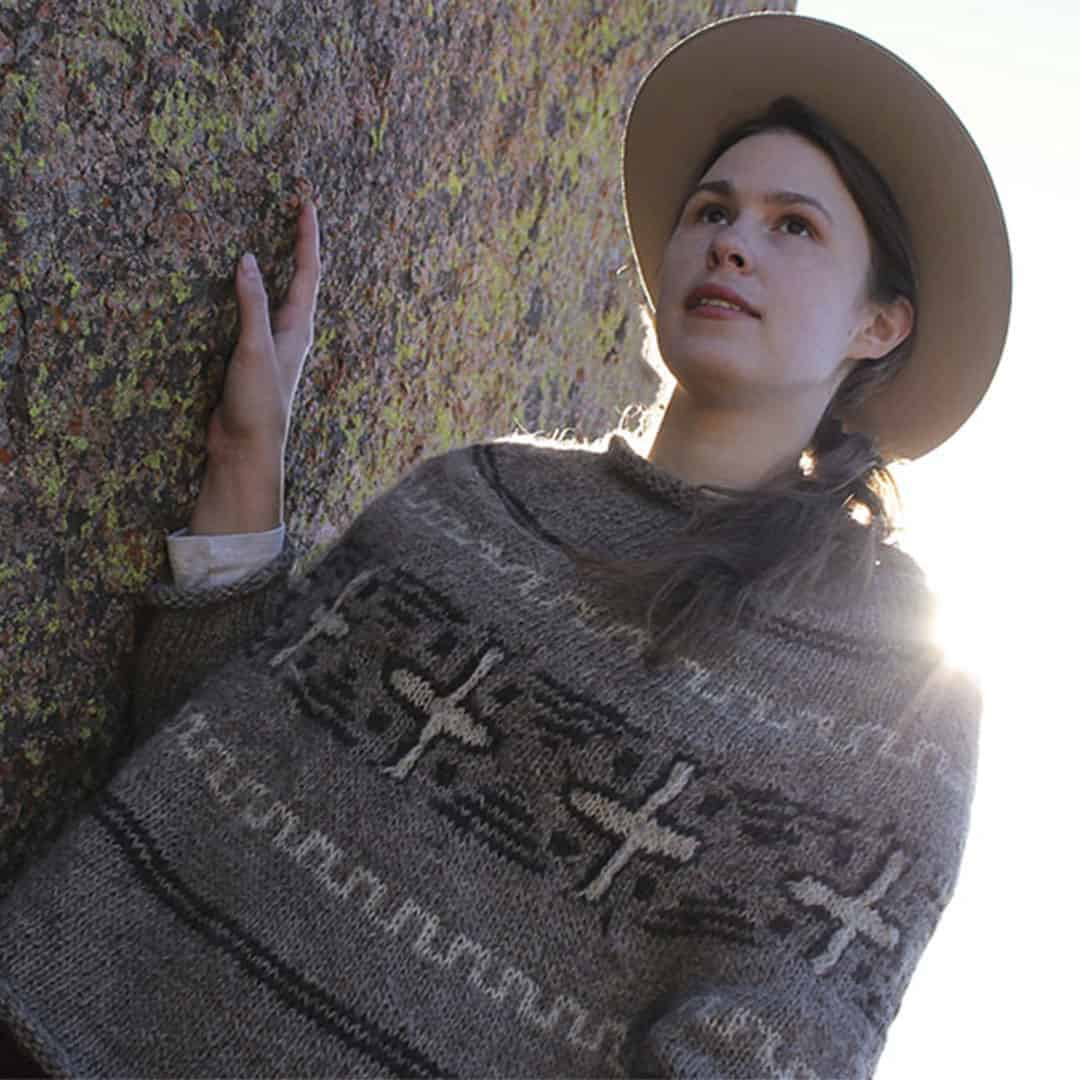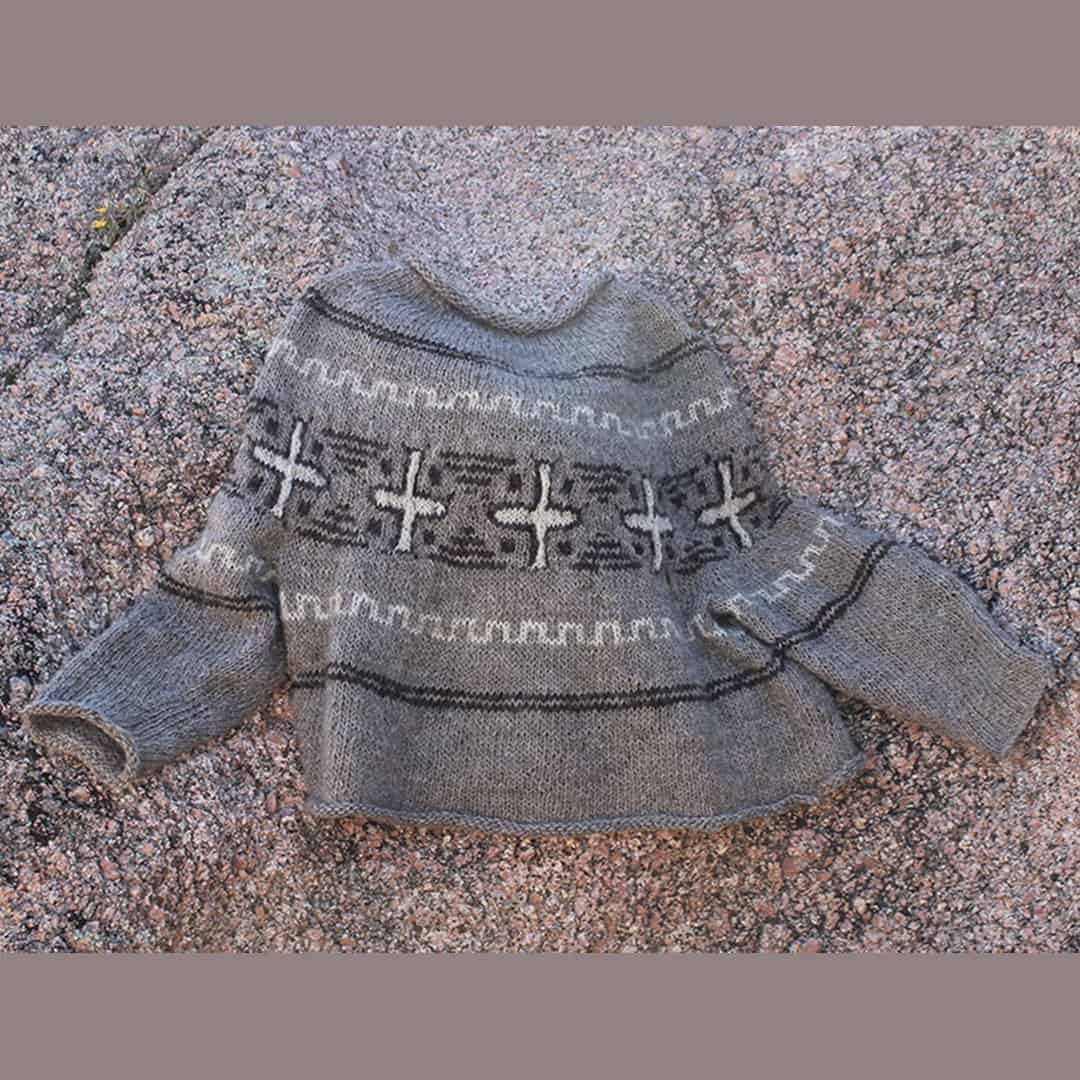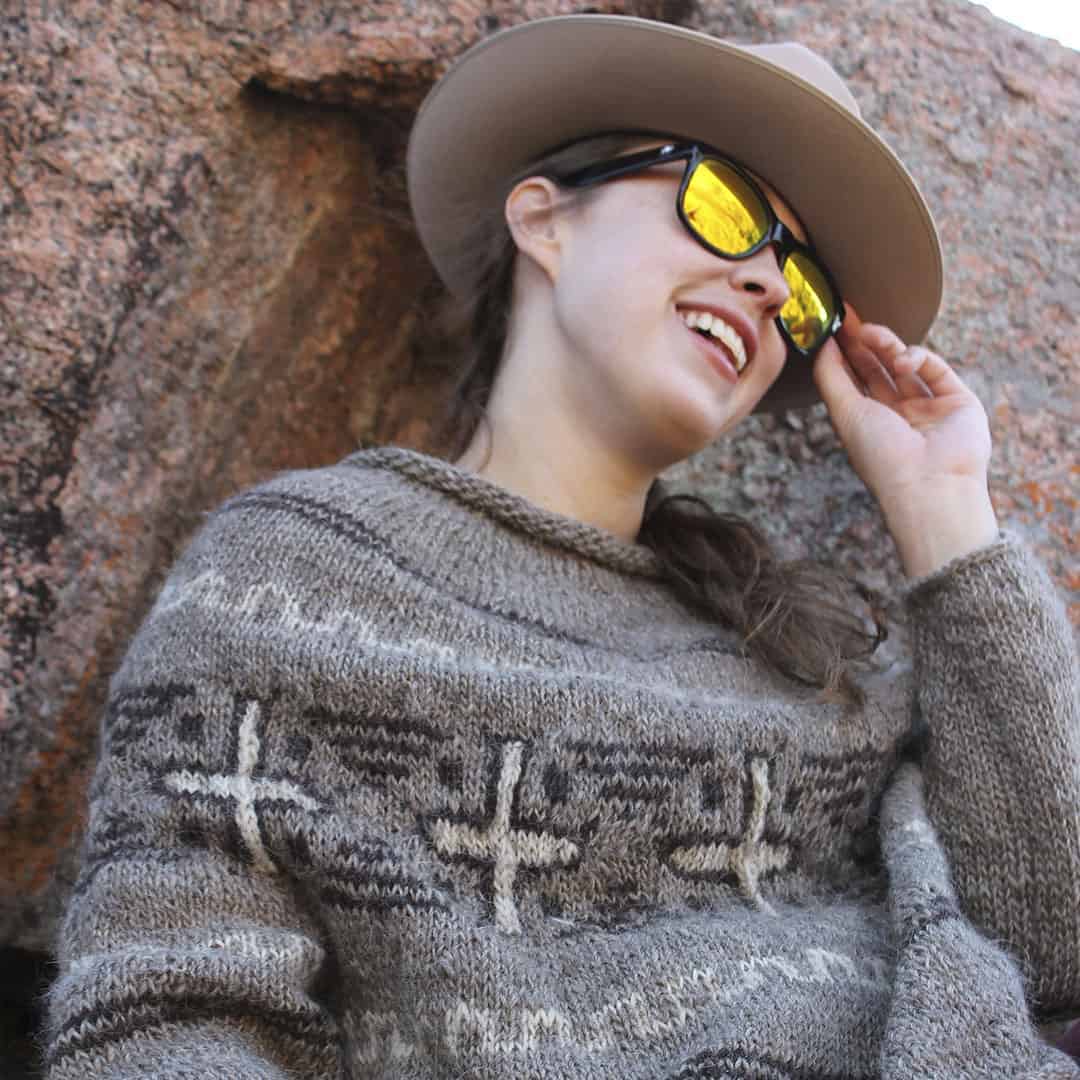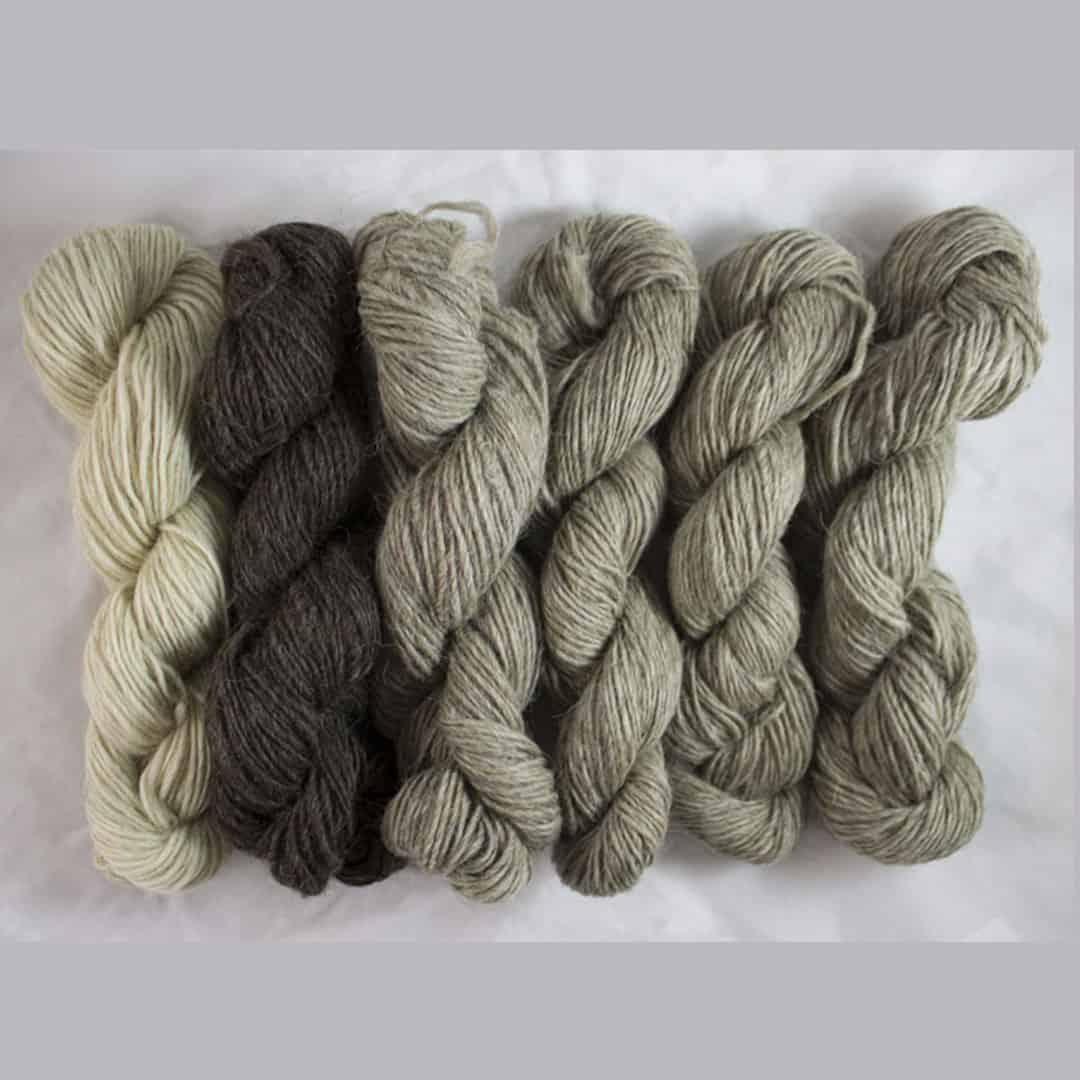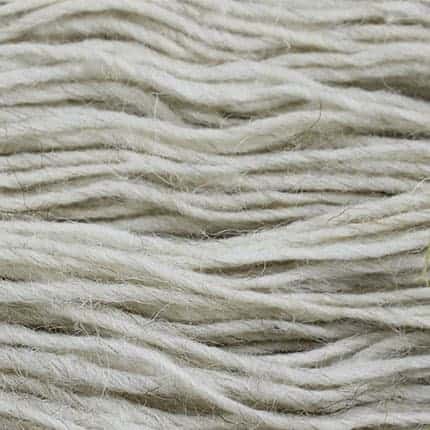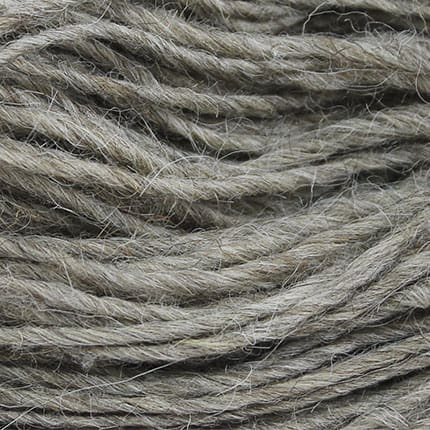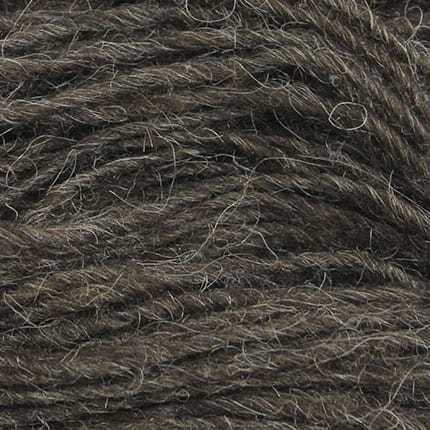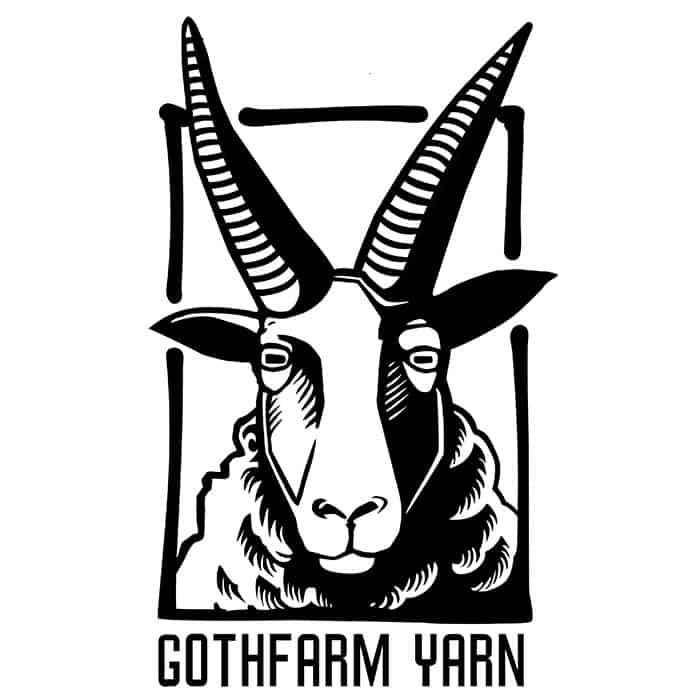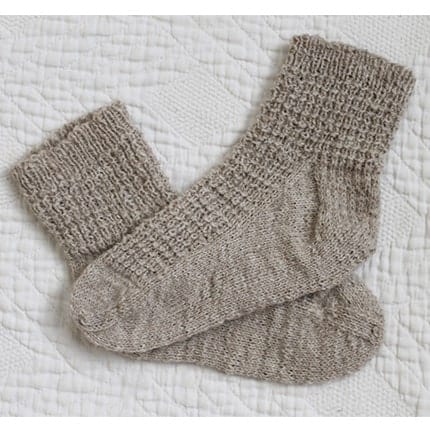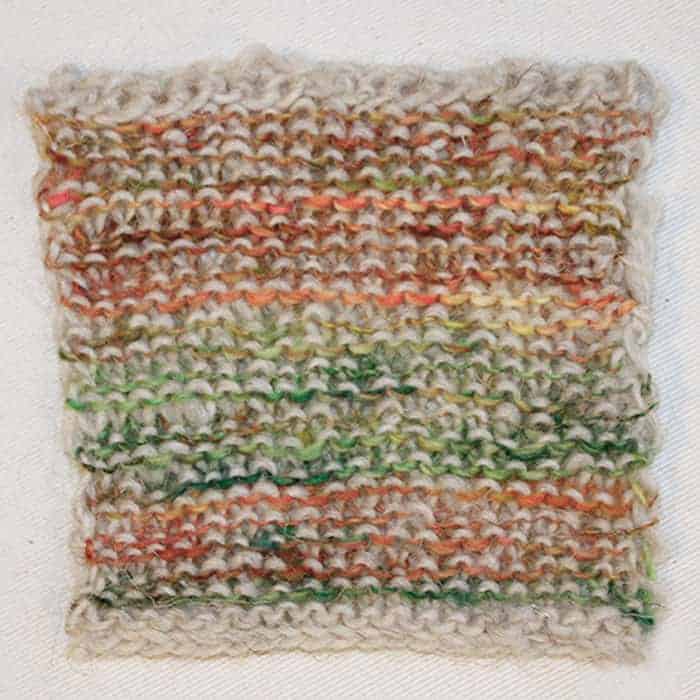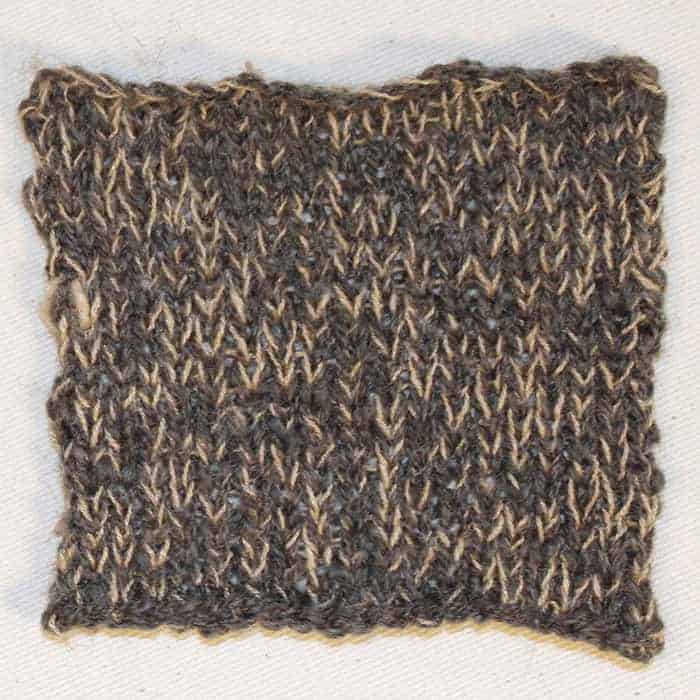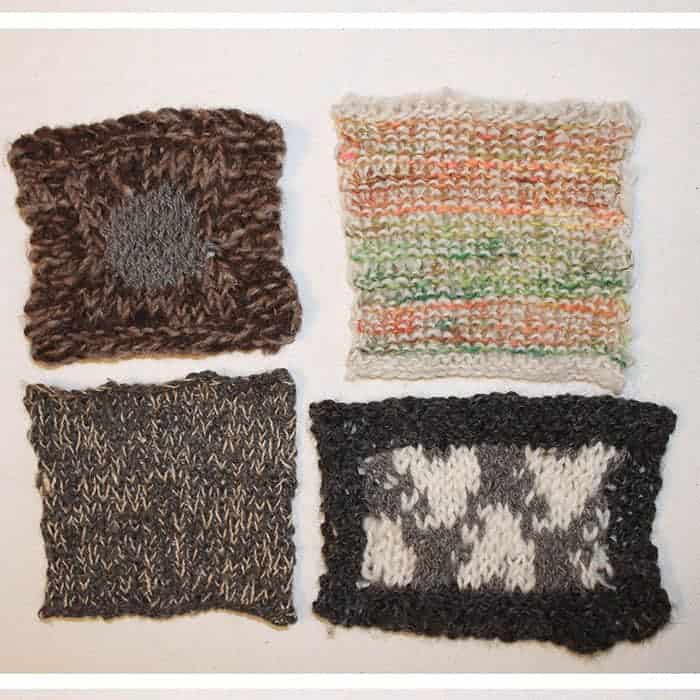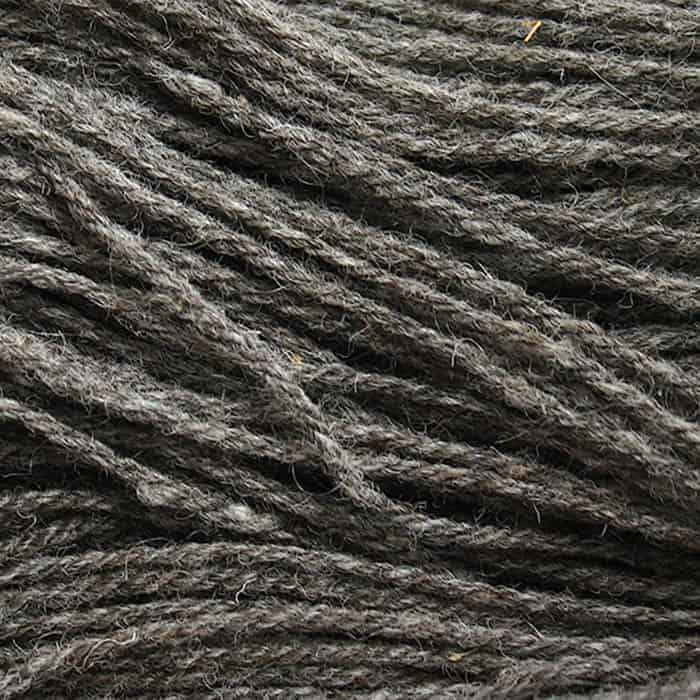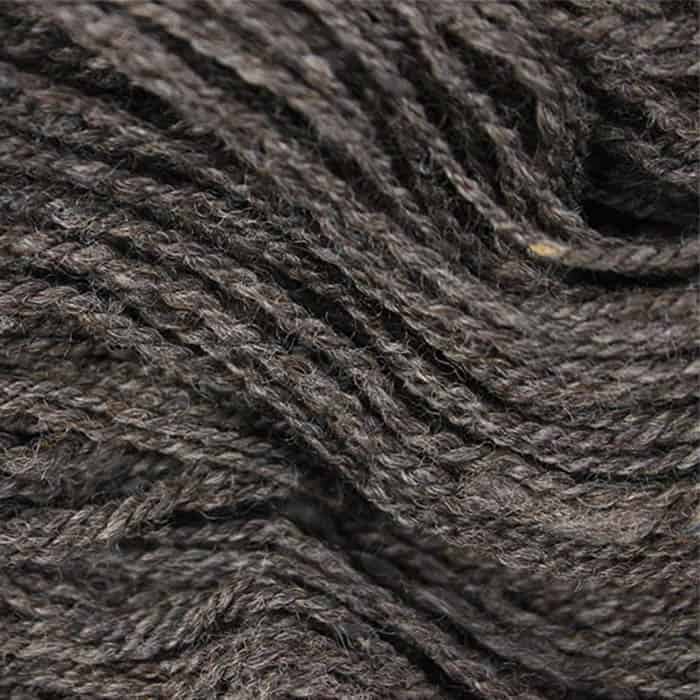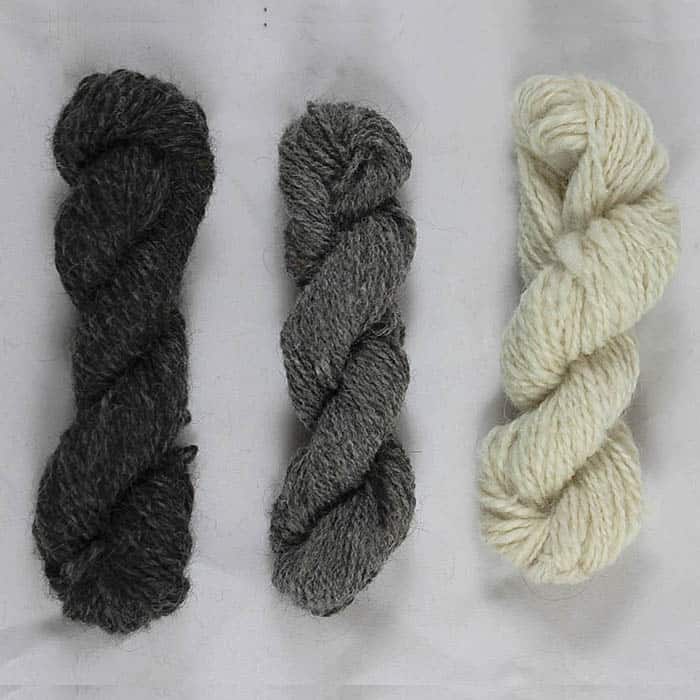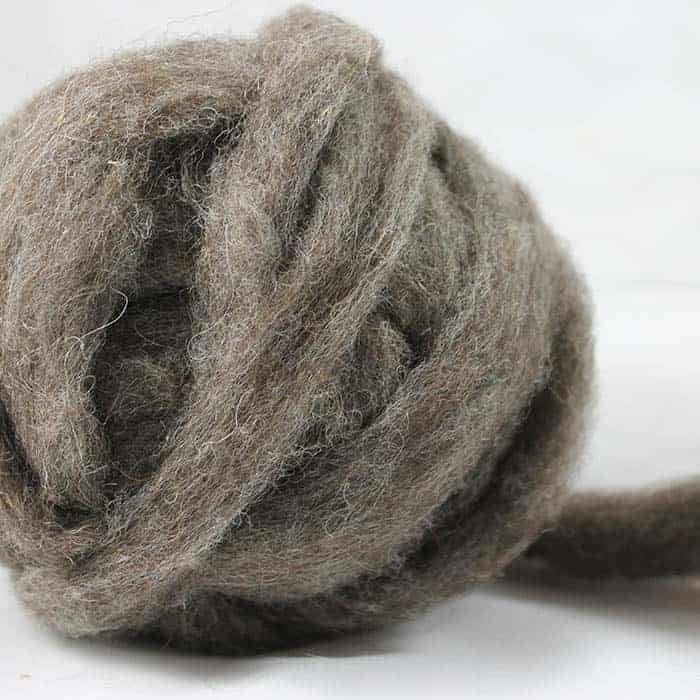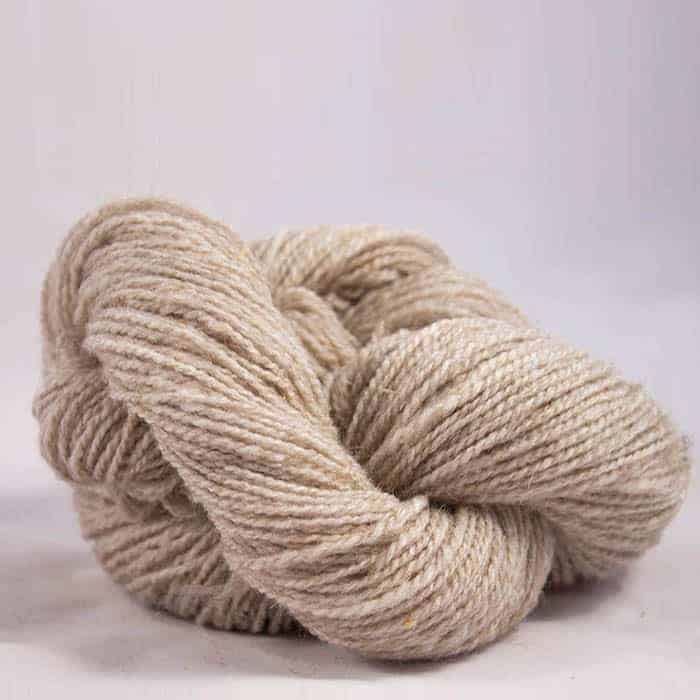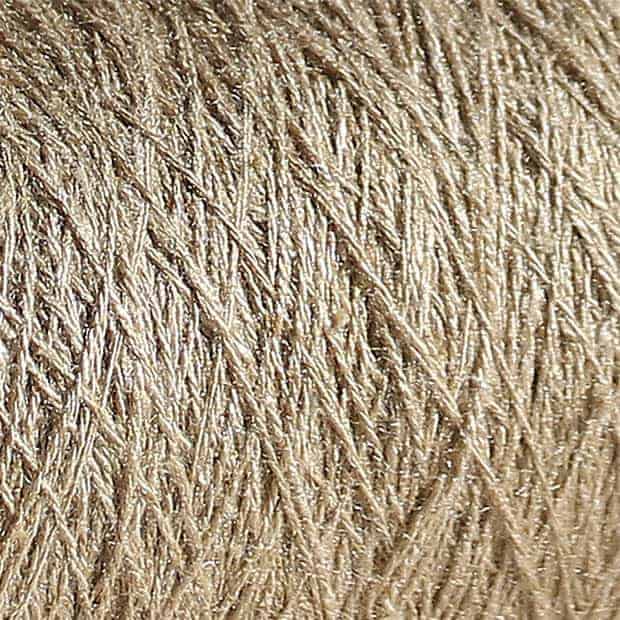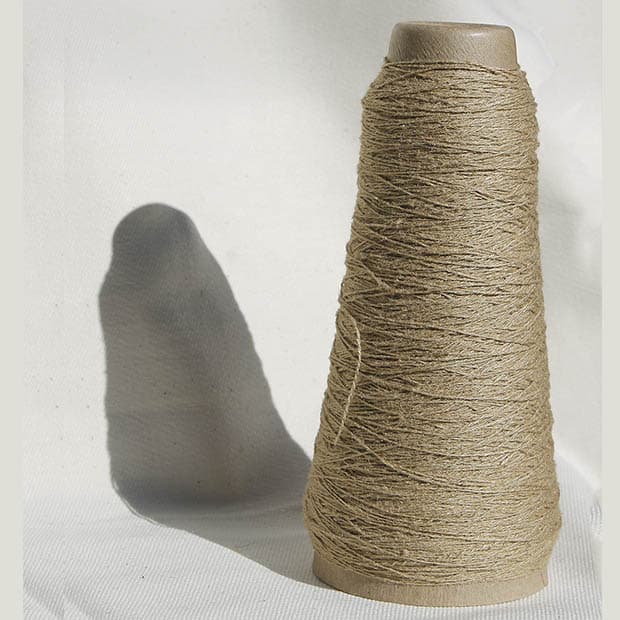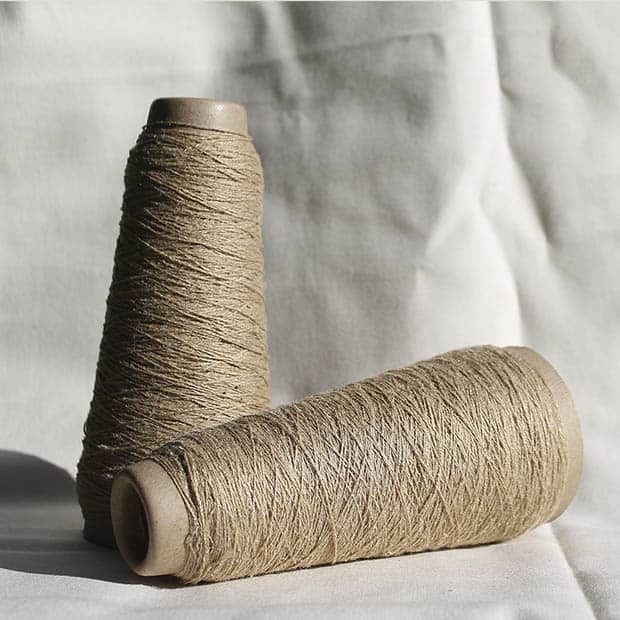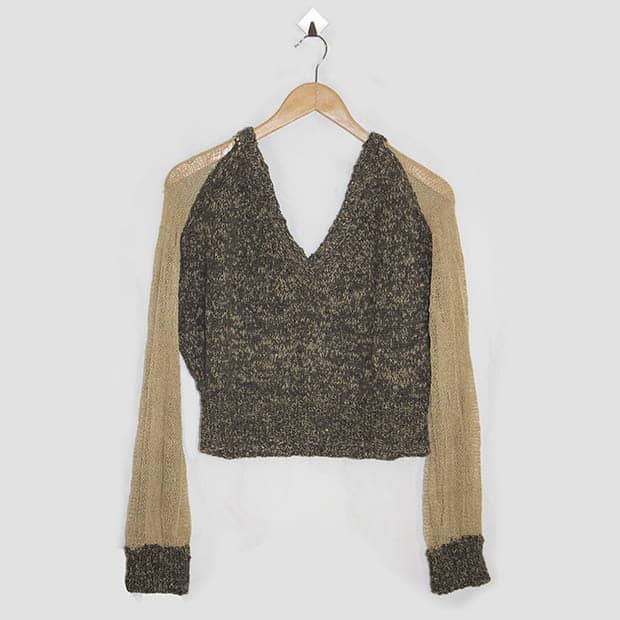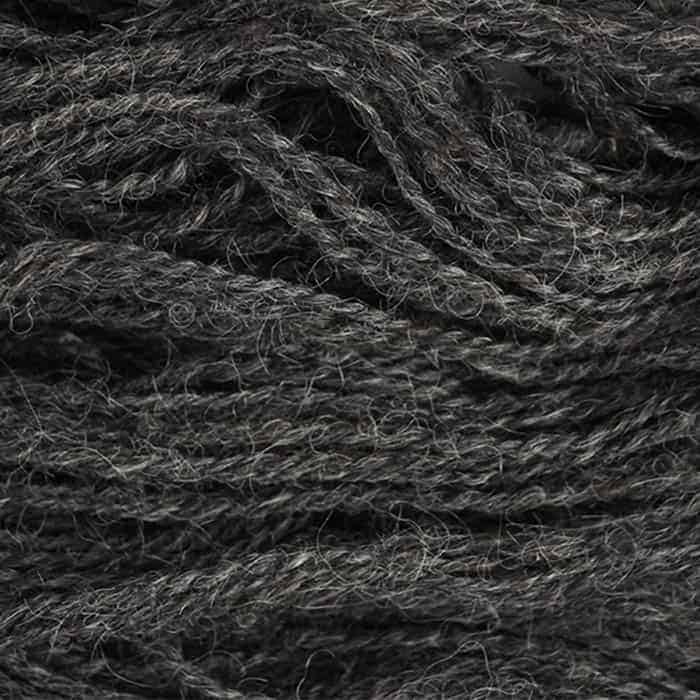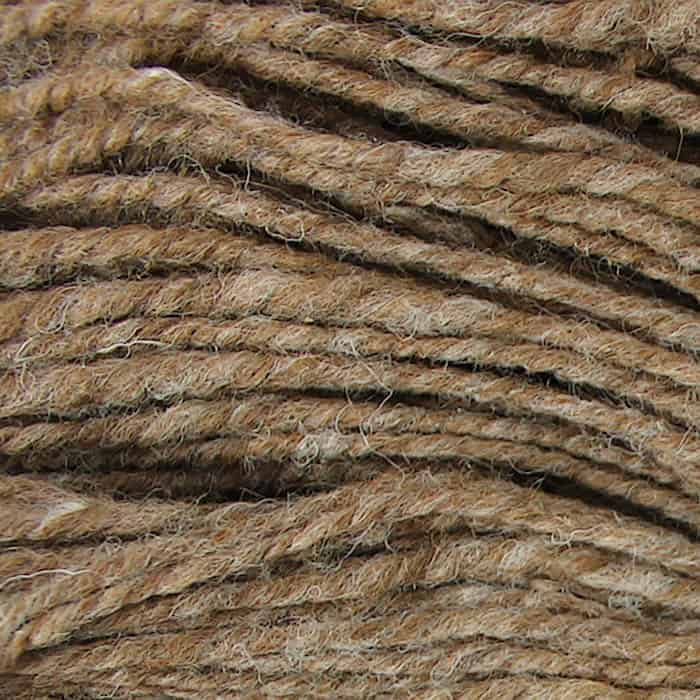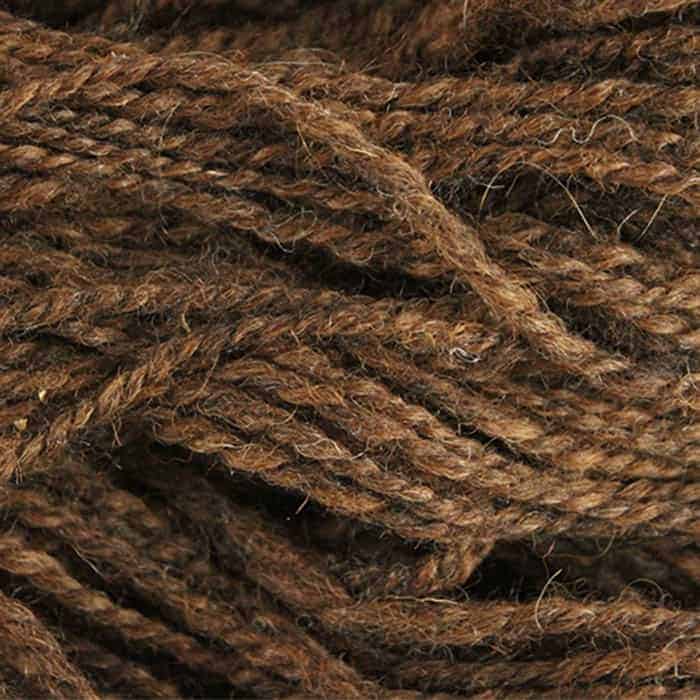The relationship between the Navajo people (who call themselves the Diné) and Navajo-Churro sheep has lasted for centuries, with the wool primarily used to create beautiful woven items. Our sweater adaption, the “Diné Motif Design,” brings traditional Diné weaving motifs into a new realm — sweater knitting — while maintaining traditional materials and centering the design of a contemporary Diné weaver.
The design is an adaption of of the “Rug” sweater, a beloved pattern by knitwear designer Junko Okamoto. The “Diné Motif Design” is the latest in a longline of adaptations and a collaboration between Gothfarm Yarn and Kevin Aspaas, a Diné weaver.
The adaption changes the original design in two ways:
– It replaces the colorwork sections with an original design by Aspaas.
– And it replaces the suggested yarn with 100% Navajo-Churro yarn from Gothfarm Yarn. Like all our yarn, the Churro yarn is made from naturally colored, undyed wool.
Navajo-Churro is a rugged, hardwearing wool! It’s not your typical garment yarn — especially in our age of superwash Merino and acrylic blends. But wearing it is easy if you just keep a couple things in mind.
-Wear a thick, long-sleeved shirt under the sweater.
-Remember that the Rug pattern has a wide neck, which keeps the wool clear from sensitive neck skin.
That’s it!
The “Diné Motif Design” adaption pattern is available as a FREE download on our website. The “Rug” pattern by Junko Okamoto must be downloaded to knit this adaption. It is currently free on Ravelry.
The kit — which includes the yarn and a high-quality hard copy of the adaption — is also available on our website.
Get some Churro on those needles!


